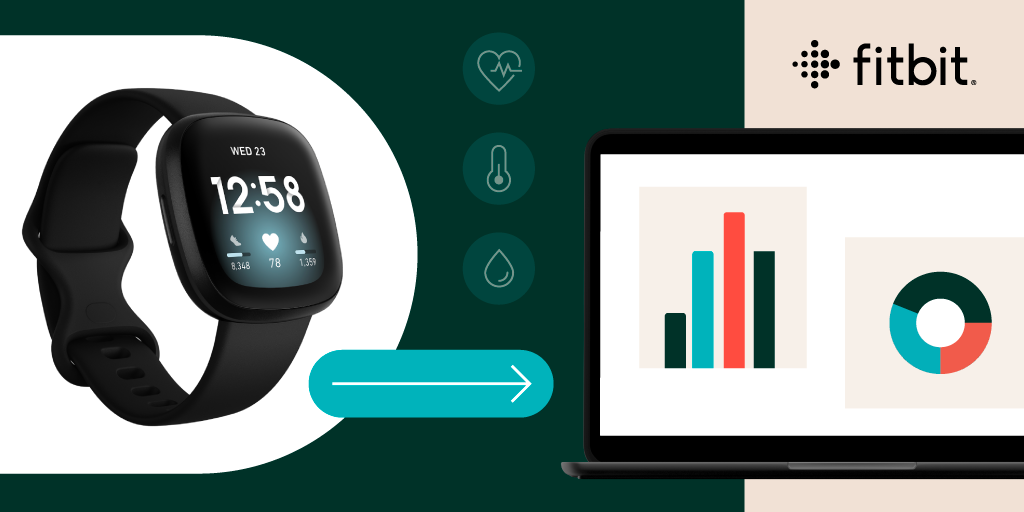7 New Data Types in Fitbit Web API

Health is one of the key pillars of building a more helpful Google. There are multiple ways we approach this mission with our products and services, and empowering the ecosystem to build great user experiences is one of the most important ways to enable health and fitness journeys.
Fitbit Web API is an essential part of our mission to help developers build better health, fitness, and wellness experiences. With user permission, it allows developers to access user health & fitness data stored in the Fitbit account.
Fitbit Web API offers a range of data types like Activity, Body, Sleep, Nutrition, Devices, Heart Rate, Friends, but we focused on expanding our open API to include in-depth health metrics this year. These new data types were top requests from our developers. We addressed these requests and have significantly expanded our data type support through 2022 with 7 new data types, with the latest one available today.
Electrocardiogram (ECG)
The Electrocardiogram (also known as ECG) endpoint is the latest data type we have released and it is used for querying the user's on-device ECG readings. The ECG API is for research or investigational use only, and is not intended for clinical or diagnostic purposes. Developers can use the following API endpoint when integrating the electrocardiogram data type:
- Get ECG Log List returns a list of the user's recorded ECG readings and their details.
Blood Oxygen Saturation (SpO2)
SpO2 (Oxygen Saturation) is a measurement of your blood oxygen level, recorded by body sensors while a Fitbit user is asleep. Developers can use the following API endpoints when integrating the SpO2 data type:
- Get SpO2 Summary by Date returns single date summary data.
- Get SpO2 Summary by Interval returns interval summary data for a specified date range.
Heart Rate Variability (HRV)
The Heart Rate Variability (HRV) endpoints are used for querying the user’s heart rate variability data. Developers can request the following API endpoints when integrating the HRV data type:
- Get HRV Summary by Date returns single date summary data.
- Get HRV Summary by Interval returns interval summary data for a specified date range.
Breathing Rate
Breathing Rate or Respiratory Rate is a measurement of your average breaths per minute at night, recorded by body sensors in Fitbit smartwatches, Google Pixel Watch, and Fitbit fitness trackers. The Breathing or Respiratory API is for research use or investigational use only, and is not intended for clinical or diagnostic purposes. Developers can use the following API endpoints when integrating the Breathing Rate data type:
- Get Breathing Rate Summary by Date returns single date summary data.
- Get Breathing Rate Summary by Interval returns interval summary data for a specified date range.
Cardio Fitness Score (VO2 Max)
The Cardio Fitness Score (also known as VO2 Max) endpoints are used for querying the maximum or optimum rate at which the user’s heart, lungs, and muscles can effectively use oxygen during exercise. Developers can use the following API endpoints when integrating the VO2 Max data type:
- Get VO2 Max Summary by Date returns single date summary data.
- Get VO2 Max Summary by Interval returns interval summary data for a specified date range.
Temperature
The Temperature endpoints are used for querying either the core temperature data logged manually by the user, or the skin temperature recorded by the device while the user is asleep. Developers can use the following API endpoints when integrating the Temperature data type:
- Get Temperature (Core) Summary by Date returns single date summary data.
- Get Temperature (Core) Summary by Interval returns interval summary data for a specified date range.
- Get Temperature (Skin) Summary by Date returns single date summary data.
- Get Temperature (Skin) Summary by Interval returns interval summary data for a specified date range.
Active Zone Minutes (AZM)
The Active Zone Minutes (AZM) Time Series endpoints are used for querying the user's heart-pumping activity throughout the day. Developers can request the following API endpoints when integrating the AZM data type:
- Get AZM Time Series by Date returns the daily summary values over a period of time by specifying a date and time period.
- Get AZM Time Series by Interval returns the daily summary values over an interval by specifying a date range.
If your application has been granted for intraday access, additional endpoints for the above data types can be used. Learn more about Intraday here.
We have received some really positive feedback from the developers who have integrated the new endpoints so far. For example, ConnectedLife has worked to integrate every Fitbit data point available via the API and worked to integrate AZM the day it was launched.
“Access to Fitbit data has opened the way for us to deliver integrated solutions across APAC and EMEA, such as continuity of care and monitoring with Manipal Hospitals for patients recovering from high-risk surgeries. The availability of Active Zone Minutes through the Web API is an important contributor to inclusivity, for example, for those who are mobility restricted. This has added immense value to our solution which will further enrich the data that clinicians, administrators and organizations can access to monitor their patients' overall health and wellness.” - Tomasz George, Chief Scientific Officer, ConnectedLife Health Pte Ltd
These new endpoints open up a number of possibilities for developers, and we’re looking forward to seeing what you do with them.
You can read about and stay up to date with the Fitbit Web API Reference documentation and join the conversation with other developers at the Web API Development Community.




